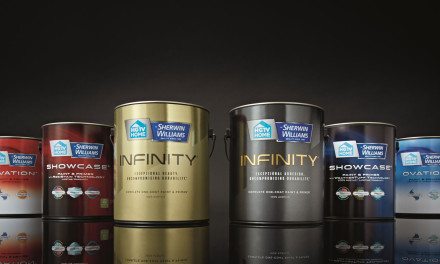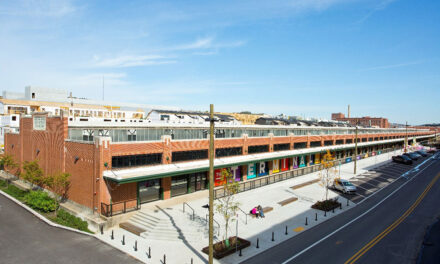Combating air traffic overhead in the Pacific Northwest
In a community heartened by the opening of its first library in 1924,[1] the good citizens of Des Moines, Washington opened a stunning new school the following year on the site of their original one-room school building. Just three years later in 1928, 50,000 air flight-enamored residents attended the dedication of the land where Boeing Field would be constructed.[2] By 1930, the terminal was complete and the sounds of birds chirping in the trees quickly changed to the sound of aluminum birds whizzing by overhead.
Fast forward to 2019 with Seattle-Tacoma airport occupying Boeing Field after a purchase in the 1940’s, where the airborne concerto of takeoffs and landings reaches a persistent climax—hardly ideal for concentrating on one’s studies. Couple that with decades of surviving legendary rains, snow and extreme windstorms, along with wear and tear from the rambunctious life of an elementary school, and the building was due for retirement.
“Our old school served many generations,” said Des Moines Elementary School principal Rick Wilson at the groundbreaking on June 8, 2018. “The hardwood floors echo the memories of decades of students and staff, but we won’t miss the plumbing, heating, leaky roof or connectivity issues. We are looking forward to a grand opening in fall 2019 when we can welcome all the students and staff and families to a modern school building that will serve this community for generations to come.”[3]
Overcoming Sound Near Puget Sound
After a standard RFP process, Hutteball + Oremus Architecture of nearby Kirkland, Washington, was awarded the contract to design the new school, with architect Ingrida Sanders acting as designer and project manager. Puyallup, Washington-based Absher Construction was chosen to serve as the project’s general contractor.
Lying directly in Sea-Tac airport’s flight path, noise mitigation was a major criterion of the wall and roof assembly design.
“This is the first time we’ve designed a project to meet strict noise standards,” Sanders explained. “All the products we specified for the building envelope, from sheathing to glazing to roof board, had to meet certain Sound Transmission Class (STC) ratings to comply with health department administrative code and Federal Aviation Administration (FAA) requirements. Two tests will be conducted before the school opens to ensure the requirements were met.”
Dens® Solutions for the modern envelope were specified: DensElement® Barrier System and DensDeck® Prime Roof Board with EONIC™ Technology. The versatility of the Dens Solutions exterior wall and roof products removes friction from the design process, making specification easier and supporting creative envelope design for the architects and designers who bring it to life.

Dens®Solutions installation at Des Moines Elementary School. Photo courtesy of Georgia-Pacific
The Envelope’s Starting Line: The Roof
Sanders specified DensDeck Prime Roof board on multiple past projects, the decision to incorporate it into the Des Moines Elementary School building envelope was straightforward.“It’s an excellent product to use for weather protection and mold and fire resistance,” Sanders said. “It’s no surprise that everything ran smoothly.”
DensDeck Prime Roof Board features EONIC Technology, a patent-protected enhancement that has doubled its resistance to moisture, and meets the industry’s tough new Three-Part Specification for Moisture Resistance, which includes 5% total water absorption resistance by weight and 1-gram surface water absorption performance on both sides of the board. Also improved is the board’s critical mat-to-core bond strength, which averaged 23% stronger on the face and 192% stronger on the back in independent testing when compared to DensDeck Prime Roof Boards before the enhancement.[4]
To achieve a STC rating of 49, three layers of 1/2” DensDeck Prime Roof Board were specified to cover the roof’s deck. “Our acoustical consultant recommended we use at least two layers of 5/8” roof board, but we decided to use three 1/2” layers to ensure the students were protected,” Sanders said.
The positional versatility of DensDeck Prime Roof Board enables its use as a cover board and thermal roof board, expanding design possibilities. Since the district chose to install a temporary roof on the building during the construction process, the first layer of DensDeck Prime Roof Board was used as a base for a self-adhered waterproof underlayment. “It was helpful that the contractor was able to use the first layer of DensDeck we specified for the permanent roof rather than having to install an additional cover board for the temporary roof,” Sanders noted. “Since they were dealing with wet weather, it allowed them to dry-in the temporary roof more quickly, which helped save the schedule.”
The dimensional stability of DensDeck® Prime Roof Board with EONIC™ Technology, when used as a cover board, eliminates gapping making them easier to install. Jake Peavler, Project Manager for Absher Construction, said it best, “It’s one less thing we have to take into consideration for our installers and one less thing they have to worry about—that saves time.”
Playing Offense Against Sound and Weather
With its Pacific Northwest location, and the sheathing work pushing into rainy season, sheathing selection for weather as well as sound abatement was critical.
Ms. Sanders noted, “The biggest aspect of a fluid-applied weather-resistive barrier is you need dry days and it takes time. In the Pacific Northwest, by the time they’d start installing it, dry days are few and far between. DensElement® Barrier System eliminated that requirement. The contractor could just proceed with FastFlash® applied on seams and fasteners and save time. It was impressive and that’s why we knew we’d specify it.”
Jake Peavler agrees with Ingrida Sanders. “There are definitely advantages to using DensElement Barrier System over fluid-applied. You’re able to keep the sheathing and WRB-AB under one subcontractor rather than having to bring in an additional waterproofing crew. Once you apply the PROSOCO® you can walk away and you’re done—you don’t have to apply a completely different product over it. “
DensElement Barrier System enables tighter sheathing schedules and helps save on labor costs due to process consolidation. A separate water-resistive and air barrier (WRB-AB) is not needed. By filling microscopic voids in the glass mat and gypsum core of DensElement® Barrier System with AquaKor™ Technology, a hydrophobic, monolithic surface is created that blocks bulk water while retaining vapor permeability. It only requires sealing joints, fasteners, openings, penetrations and transitions with PROSOCO R-Guard® FastFlash®, a silyl-terminated polymer (STP) flashing membrane that can be applied even to damp surfaces.
“We had internal quality control with the help of the building consultant, so it was an easier process just having to seal the seams and fasteners rather than covering every square foot of sheathing,” Peavler stated.
One layer of DensElement Barrier System was specified for the project’s noise abatement requirements. Adding this layer boosts the mass of the wall, reducing the ability for sound vibrations to transfer to the interior and enhancing noise abatement.[5]
“There are benefits that come from having an air barrier in place. It will reduce unwanted air movement and reduce sound transmission as well. The DensElement Barrier System simplifies the construction of a continuous air control layer and therefore reduces sound transmission via air movement,” said Product Manager John Chamberlin.
Resisting Moisture in the Busiest Room
Dens Solutions were a specification trifecta on the project: DensDeck® Prime Roof Board, DensElement Barrier System and DensShield® Tile Backer, the first backer board with a proven moisture barrier. It was the choice for the busiest floors in the school—those in the restrooms.

Photo courtesy of Georgia-Pacific
Specifying the Envelope to Your Advantage
Sanders said specifying multiple Dens Solutions was beneficial for the project in multiple ways. “In addition to the performance the products offer, it was nice to have them come from a single manufacturer so you know they’ll be compatible. And it was an easier process for procurement.”
Walking into a New History
When students walked through the doors of the new Des Moines Elementary School in September 2019, they were carrying with them the history of a one-room school, the memory of a building that delighted the city in 1925, and the privilege of christening a school building that will carry the pride of generations into the future—with the peace, quiet and weather protection they have long deserved.
[1] https://www.historylink.org/File/20216
[2] https://www.historylink.org/File/2077
[3] https://www.highlineschools.org/departments/school-construction/news/news-details/~board/district-news/post/breaking-ground-at-des-moines-elementary
[4] Based on published manufacturing specifications as of December 1, 2017.
[5] https://www.gypsum.org/the-basics-of-sound-control/
Case study source: Georgia-Pacific Building Products https://www.buildgp.com/
©2019 GP Gypsum. All rights reserved. DENS, DENSELEMENT, AQUAKOR, the color GOLD, GEORGIA-PACIFIC and the GP and DENSELEMENT logos are trademarks owned by or licensed to GP Gypsum. PROSOCO, R-GUARD and FASTFLASH are registered trademarks of PROSOCO, Inc. and are used with permission. Lit# 622970. Rev. 6/19.





